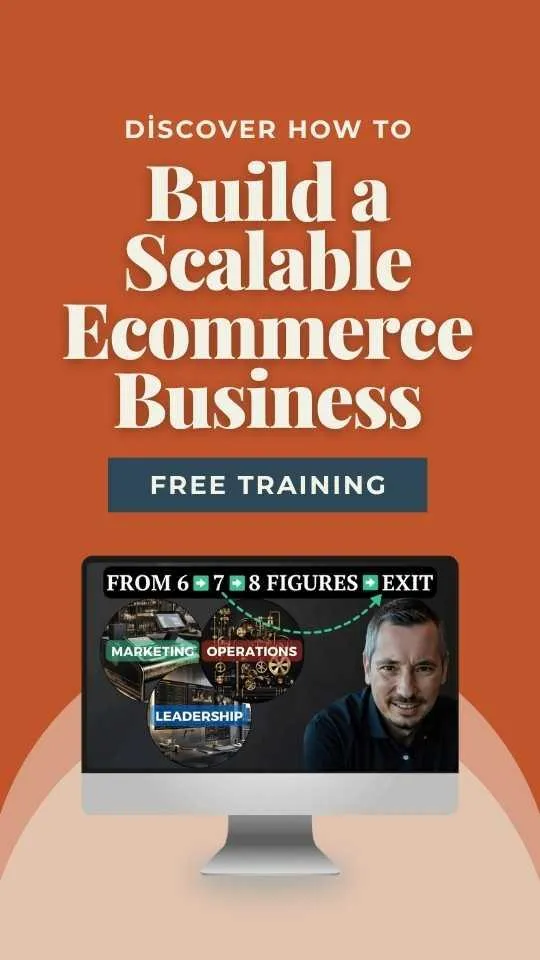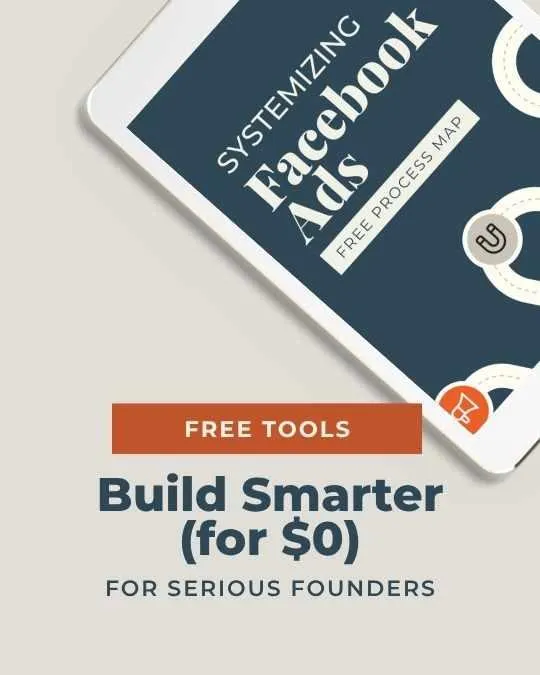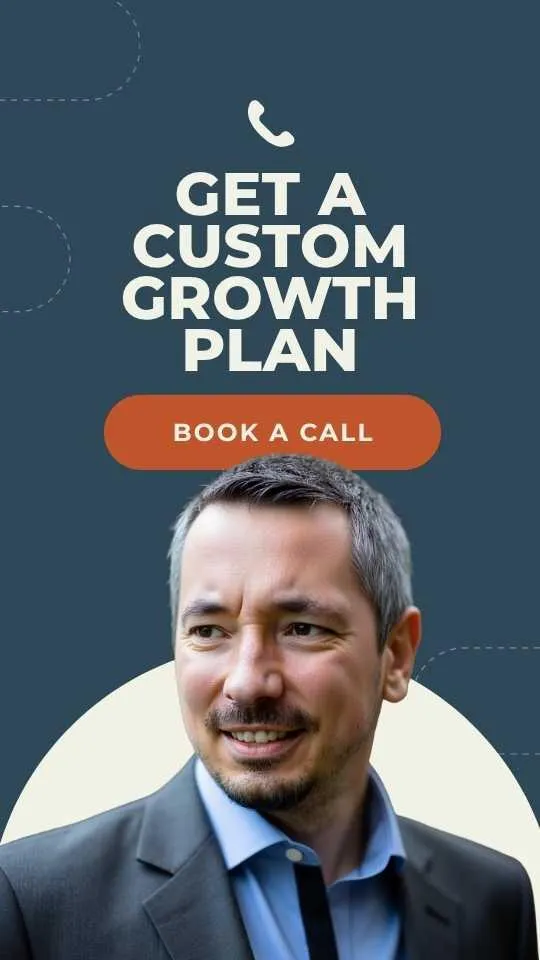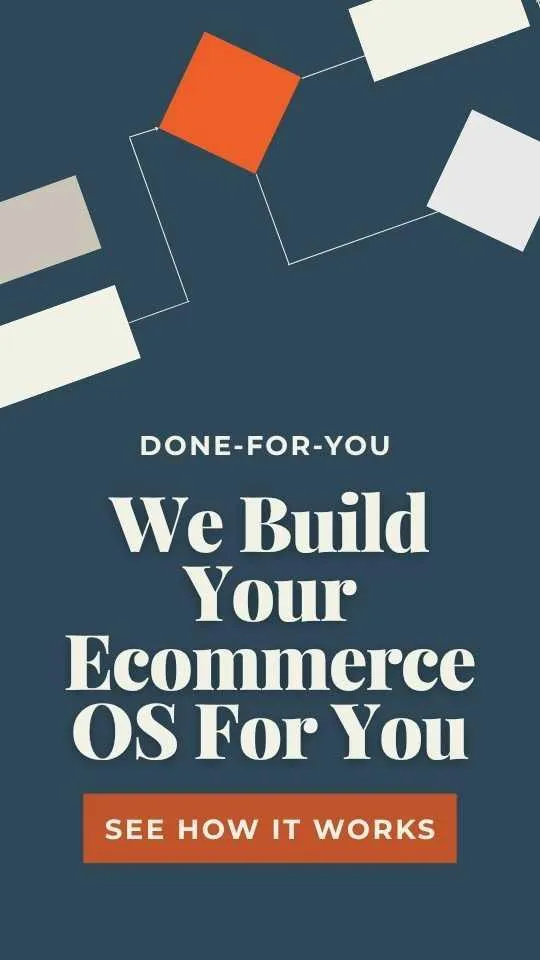Freemium vs Premium Pricing: Scale Your Store Like a Pro
Choosing the right pricing strategy can feel like picking between apples and oranges, especially when you're looking to scale your eCommerce store. Do you go with freemium, luring in customers with free basics, or do you shoot for premium, where every feature commands a fee? Freemium helps attract a large user base quickly, while premium ensures revenue flow right off the bat. Your choice will shape how you attract and keep customers.
Freemium pricing can be a magnet for new customers. They get hooked on your free offerings, and when they're ready for more, they pay for additional features or services. It's great for customer acquisition and expanding your reach.
Premium pricing, on the other hand, sets the stage for a strong upfront commitment. This strategy can position your store as high-end, attracting customers who value quality and are willing to pay for it. Balancing these strategies isn't just about numbers; it's about understanding what makes your store click with users.
Key Takeaways
Freemium grows your user base rapidly.
Premium ensures immediate revenue.
Your strategy depends on your store goals.
Understanding Freemium and Premium Models
When looking at pricing strategies, freemium and premium models stand out as two popular choices. Each offers unique paths, aimed at attracting different customer segments and maximizing value.
What Is Freemium?
Freemium combines "free" and "premium." You give away the main features for free, grabbing attention and creating buzz. This model is like a low-barrier entry highway for customers.
You entice users by letting them use your product at no cost. The catch? If they want the full package, they need to upgrade. It's all about cashing in on a small percentage of users who turn into paying customers.
It's a popular strategy among tech startups and apps. Think of Spotify or LinkedIn. They draw you in with freebies, then offer more goodies for those willing to pay. Conversion is key here, so the free version has to be good, but not enough.
What Is Premium?
Premium is where you position your product as top-of-the-line. Customers pay, and they expect luxury, exclusivity, and top-notch service. You sell the dream.
This model caters to a market that doesn't mind paying for perceived value. It's about maintaining a strong brand and providing more than your competitors. Imagine Apple or Tesla. You're not just selling a product; you're selling an identity or lifestyle.
Premium works when your product stands out in a crowd. Unique features, quality service, and customer experience drive this model. You create a desire and meet it with value that justifies the cost. Pricing isn’t just about money. It’s about what you offer and what your customers perceive.
Key Differences Between Freemium and Premium
Freemium lowers barriers to entry. You get masses in with zero cost. It focuses on converting a fraction into paying subscribers.
Premium sets high barriers. It’s about exclusivity and high-ticket items. You target fewer, but potentially loyal customers who pay for quality.
Freemium relies on volume and conversions. Premium rides on unique value and brand strength. The landscape each thrives in differs. Freemium needs a broad market appeal. Premium niches down to specific segments willing to spend.
Choosing between them boils down to your goals, market fit, and what value you bring to the table.
The Psychology Behind Pricing Models
Pricing isn’t just numbers. It’s about how people feel about those numbers. People’s decisions often rely on how they perceive the value. Let's dive into how the psychology in pricing plays a role in adoption and conversion rates.
Perceived Value in Pricing
When people see a price, they make instant judgments. It’s called perceived value. If something is priced high, it often screams quality. But if it’s too low, you might think it’s cheap (and not in the good way).
Smart pricing strategies use perceived value to their advantage. The premium pricing model banks on this. By setting higher prices, you're not just selling a product, you're selling an idea: this product is top-notch and worth it. People love a good story, and pricing tells one.
The Impact of Free on User Adoption
Everyone loves free stuff. It's just how our brains work. The word "free" sends a rush of happiness through us. Companies use this to get more users with the freemium model.
Offering something for nothing is a hook. It's like an open door. People are more willing to try a new product if there's no cost involved. This strategy helps boost user adoption quickly. More users mean more chances to convert them into paying customers down the line.
Conversion Psychology in Premium Models
Once you’ve got users through the door, it’s time to convert them. This is where many businesses focus their efforts. Conversion psychology guides you here.
People need a nudge to move from free to paid. Maybe it’s the allure of additional features. Or it’s exclusivity. Limited time offers and bonuses often do the trick. This is classic scarcity psychology. You create urgency and motivate users to act before the opportunity slips away.
Using these insights helps tap into emotions that drive conversions. Getting those conversions right is key. It’s not just about the numbers; it’s about making users feel they’re getting more value than they’re paying for.
Pros and Cons of Freemium
When it comes to freemium, you're walking a tightrope between attracting users and making money. This model gives users a taste for free, but getting them to pay can be a whole different game. Let’s dig into the good and the not-so-good stuff about freemium.
Advantages of Freemium
Freemium can reel in loads of users fast. Everyone loves free stuff, right? That means a bigger audience and viral growth. Because it’s free, people are more willing to give it a try without hesitation.
And here's where the network effect kicks in. As more users jump on board, they bring their friends. This turns your platform into a buzzing hub. More users often lead to more data, helping you refine your product and ramp up customer satisfaction. You get valuable user feedback without spending a dime on ads or market research.
Freemium also means low barriers to entry. People can explore your product and see its value without committing cash. This can build a loyal fanbase who might convert to paying customers once they’re hooked.
Challenges with Freemium
Freemium isn’t just a walk in the park. First off, getting folks to pay is harder than you think. Sure, lots of users come for the freebie. Convincing them to upgrade? That's the real hustle.
There's also the risk of customer feedback taking a hit. If too many users are freeloading, they might not see enough value to stick around. That’s a problem.
Balancing free and paid content can be daunting. You want enough features to attract users but hold back premium offerings to make upgrading tempting.
Lastly, be ready for higher operational costs to support many users who may never pay. That can squeeze your resources.
In short, freemium isn’t all sunshine and rainbows. It’s a balancing act that requires strategic thinking and constant tweaking.
Pros and Cons of Premium
The premium pricing model can offer exclusive features that attract customers who are willing to pay more. But, there are also challenges, such as maintaining high customer satisfaction and loyalty.
Advantages of Premium
The premium pricing model lets you charge more because you offer top-of-the-line features. Customers often see these features as adding more value, so they’re happy to pay up. This approach boosts your brand image as high-end, attracting clients who are looking for quality over discounts.
Premium customers often expect top-notch customer support and personalized services. It’s your chance to shine by offering exceptional support. This can lead to increased customer loyalty and higher lifetime value. When customers know they'll get support when they need it, they're more likely to stick around.
Revenue streams from premium products are often more stable. High-paying customers are usually less price-sensitive, which helps you maintain consistent cash flow. The stability can help you plan better and focus on scaling your business further.
Challenges with Premium
Going premium means high expectations all around. Customers paying top dollar demand exceptional experiences. If you fail to provide the premium features they crave, disappointment can spread like wildfire. Managing these expectations is crucial.
It’s also important to remember that not everyone can afford premium prices. This limits your potential market size. You need to carefully target customers who value your premium offerings. It’s a constant balancing act between exclusivity and accessibility.
Finally, maintaining high standards requires ongoing investment. Whether it’s in product development or customer service, the costs can add up quickly. You have to ensure that what you offer justifies the price tag. Balancing these costs while keeping your prices competitive can be tricky.
Evaluating Your Product for the Right Model
Choosing the right pricing model can be a game-changer. If you nail this, you're on your way to scaling your eCommerce store effectively. Here's what you need to know to make that choice.
Does Freemium Fit Your Offer?
Freemium pricing is like giving out free samples. People love free. Your product should be something easy to try out without a lot of hand-holding. Simple apps or basic services usually work well here.
Ask yourself, is there a large potential user base? Freemium shines in huge markets. People can try the basic version, and if they like it, they'll pay for the extras. Think of viral growth opportunities. Your product should become more useful or valuable as more people use it.
Competitors also play a role. If you're in a crowded market, freemium can help you stand out. But it works best when your product is straightforward and adds immediate value. So, if your offer ticks these boxes, freemium might just be your ticket. Consider freemium vs premium pricing strategies to ensure your product fits well.
When Premium Is the Way to Go
Premium pricing is all about exclusivity. Your product should scream value, and it should clearly differentiate itself from competitors. If people see your product as a premium one, they're willing to pay more for it.
This model suits complex products or services where people expect higher quality. High-end fashion or cutting-edge tech usually falls here. When your target market segments are more niche and value uniqueness, premium works great.
Focus on differentiation. What makes your product stand out? Maybe it's a unique feature or superior craftsmanship. You also need to evaluate competition closely. Can you command a higher price due to perceived value? If yes, a premium pricing strategy might be your play.
Explore premium pricing details to evaluate if it suits your business.
Assessing Market and Product Fit
Knowing your market is key. Figure out who your audience is and what they want. Are they more budget-conscious or do they care about exclusivity? This will steer your pricing strategy.
Analyze the complexity and demand of your product. If it's high in demand and relatively simple, freemium could work. But if it's complex and targets niche markets, premium might be better.
Keep your eyes on competition. See what they’re doing and do it better. How are they priced? Can you offer more value or a unique twist? Assess how your product fits into the market landscape to decide the best pricing approach. For more insights, look into pricing strategies for eCommerce.
Pricing Strategies for Customer Acquisition and Retention
When you're running an eCommerce store, the right pricing strategy can fuel growth in user numbers and cement customer loyalty. This section highlights how strategic pricing can impact both new customer acquisition and keeping your current customers thrilled.
Freemium as a Tool for User Acquisition
The freemium model is like a magic trick for grabbing users' attention. It lets folks experience a product without forking out cash. People love free stuff. This approach works best when your product has layers of value.
Imagine offering a basic version at no cost. It's a perfect hook. Users get invested, leading many to upgrade. The goal? Convert them to paying customers. But remember, don't give away the whole shop. Keep premium features behind a paywall. This builds intrigue and creates room for upselling. Just make sure your free tier is valuable enough to make users stick around. That’s how you turn curious visitors into loyal customers.
Premium for Boosting Customer Loyalty
Now, the premium model—this is your golden goose for loyalty. People pay more for products they value highly. If your product has unique features or exceptional quality, charging a higher price reinforces that value perception.
Customers who pay a premium often expect stellar service. Meet those expectations, and they’ll stick around. They become your advocates, bringing in more customers. Plus, when customers feel they're getting exclusive features or services, they’re less likely to jump ship. Premium pricing doesn’t just sell products; it sells pride in ownership. It tells your customers they’ve made the right choice.
Balancing Acquisition Costs and Customer Lifetime Value
Balancing the cost of getting new customers with how much they’ll spend over time is key. Too high acquisition costs can sink you. But here’s the rub: sometimes spending more on acquisition pays off.
Focus on customer lifetime value (CLV). Invest in acquisition strategies that boost this, even if they cost more initially. You’ll find that targeting the right audience is crucial. They might cost more to reach, but their long-term value justifies the spend. Treat this like planting seeds. Wise investment now leads to a rich harvest later. Know your numbers, and make sure each dollar spent on acquisition brings future profits.
Upselling From Freemium to Premium
Upselling is your secret weapon in the freemium vs. premium battle. It’s where you take your freemium users and show them the magic of going premium. The trick? Make upgrading seem irresistible.
Present compelling reasons for the switch. Highlight the benefits of premium features. Offer time-limited discounts, exclusive content, or extra functionality.
Create moments where users feel missing out if they don’t upgrade. Encourage and nudge, but don’t push too hard. Balance is vital.
The key is to create a seamless path from free to paid, one that feels like a natural evolution of their experience with your product.
Implementing a Freemium or Premium Pricing Model
Choosing the right pricing model can be a game-changer for your eCommerce business. With the freemium model, you attract users with a free service tier, while a premium model can boost your brand's perceived value.
Setting Up for Freemium
Freemium models give users a taste of your product for free. Think of this like a teaser—customers get basic features without costs. Simple as that.
Your challenge? Make sure the free version is valuable enough to draw people in but not so full-featured that they never feel the need to upgrade. Balance is key here. SaaS companies do this well by limiting essential features to paid tiers.
You'll want to use data collection to understand what users do with your product. How often do they log in? What features do they find engaging?
Knowing this helps you decide what to offer for free and what to charge for.
Tiered pricing can offer flexibility. Different levels cater to different customer needs. In-app purchases can also work well. Offer add-ons that users can buy to enhance their free experience.
Rolling Out a Premium Model
Premium pricing isn’t just slapping a high price tag on your product. You gotta back it up with value. Customers should feel they're getting more than what they pay for.
Start by understanding your audience. Who are they, and what are they willing to pay for? Premium models work best for unique products.
Brand perception is crucial. If customers see your brand as high-end, they're more likely to pay a premium. Invest in marketing to build this image.
Subscription models are great here. Regular payments mean continuous value. People will stick around if they feel they belong to an exclusive club.
Monitoring and Adjusting Your Strategy
You can't just set it and forget it. Monitor how well your model is performing. Are customers engaging? If not, tweak your offer.
Check feedback and adjust. Is there a demand for new features? Consider adding them to entice upgrades.
Keep an eye on competitors' pricing. Stay competitive, but don’t gut your pricing. Use analytics to make informed decisions—data tells you what’s working or what’s not.
Remember, flexibility and constant tweaking are your best friends here. You adapt, you thrive.
Scaling Your Business with the Chosen Model
Choosing a business model isn't just about today. It's about how you'll grow tomorrow. Freemium leverages network effects, building a user base that fuels itself. Premium focuses on brand awareness and penetrates markets with quality. Let’s break it down.
Leveraging Network Effects in Freemium
Freemium models can supercharge your growth by tapping into network effects. You give away the basic version of your product, and it spreads like wildfire. Why? People love free stuff! As more users join, your product's value climbs. It's like a party—more people, more fun.
Network effects mean each user adds value just by joining.
They bring friends. They tweet about you. Suddenly your user base isn't just an audience—it's your marketing team. This helps you scale at a fraction of the cost. Get this traction right and you're onto a winner.
Freemium isn't just a strategy; it's a movement.
Expanding Reach with Premium
With a premium model, you’re building exclusivity and trust. It’s all about brand awareness combined with superior quality and service. You price your product higher, and that sends a strong signal: you’re the best in town.
Your market penetration focuses on customers who value quality.
These folks are ready to pay for a trusted solution. A smaller customer base doesn't mean smaller impact. Instead, you're generating stable revenue streams. Plus, premium customers often come with better retention, giving you long-term revenue growth.
This model also frees up resources to innovate, leading to more premium products.
Innovation and Growth Strategies
Innovation is the growth booster here.
Whether freemium or premium, you need innovative tweaks. For freemium, think user-centric features that encourage upgrades. For premium, focus on enhancing product experience. Either way, continuous improvement is key.
Growth isn't just about more users—it's about leaner, smarter strategies.
Trial new features without the risk. Use customer feedback to refine your offering. By experimenting and listening, you stay ahead. You've got wheels on your business, and they're moving fast.
In the end, innovation fuels scaling.
Analyzing Success Metrics
When you want to know if your pricing model is working, you should focus on conversion rates, revenue, and customer feedback. Checking these metrics can tell you how well your freemium or premium strategy is doing.
Freemium Success Indicators
In a freemium model, conversion rates are key. You start with a lot of free users, but the goal is to get them to pay.
Track how many free users upgrade to a paid plan. This is your conversion rate.
High conversion means you’re doing something right. Low? Time to rethink your offerings. Also, watch your churn rates. If people leave soon after upgrading, you might have a problem with value.
Revenue per user is another biggie. Even if you have lots of free users, the money comes from those who pay. So, make sure each paying user is bringing in enough revenue.
Gather user feedback often. It’s like a treasure map. It tells you what users love and what needs tweaking.
Measuring Performance in Premium
For premium, it's about keeping eyes on the prize — revenue. You want to see it growing, right? Check average revenue per user (ARPU) and see if it's climbing.
Churn rates are also worth watching. If customers are leaving quickly, dig into why. Maybe they aren’t seeing value.
User data is your secret weapon here. Look at how customers use your product. Are they using all the features they paid for? If not, figure out why. This insight can help improve your offerings and brand perception.
Customer service is another area to watch. Happy customers usually stick around, so make sure your support team isn’t slacking. Fast and helpful responses can keep churn low.
Continuous Improvement Through User Data
To improve, dive into user data. Use it like a GPS for your business decisions. Study how users interact with your products.
Are some features ignored? That’s a red flag. It might mean they’re not valuable or too hard to use.
Dig into user feedback like a detective. Look for patterns and pain points. When you listen to your users, you get ideas for new features or improvements.
Remember, it’s not just about numbers — it’s about people. So use data to make decisions that keep users happy and loyal.
Case Studies and Real-World Examples
Exploring various case studies, you'll find examples of businesses thriving with freemium models and those succeeding with premium pricing. Not all stories are sugar and spice, though. Some startups crash and burn. Here’s the inside scoop.
Successful Freemium Companies
Think about Spotify. It's a killer example of a freemium business. They've got a huge library of music accessible for free and hook you in with ads. Want uninterrupted jams? Go premium. This mix makes everyone happy—free users spread the word, and paid users boost profitability.
Dropbox is another winner. They start with basic cloud storage, free of charge. Need more space? Pay up. It’s a low-risk way to get folks in the door and drive them towards premium options. Both use freemium pricing as a smart way to grow their user base and improve customer experience.
Premium Model Triumphs
Look at Adobe. They flipped their game with Creative Cloud. Once a product you paid for once, it’s now a subscription service. This SaaS business shifted to a premium, subscription model and watched profitability skyrocket. Users pay regularly, giving Adobe a steady cash flow and a strong brand image.
Another success story is Apple. Their devices are pricey, sure, but so are their software services. People trust the quality and are happy to pay. They don't cater to bargain hunters. Instead, they focus on delivering top-notch digital services. Their pricing strategy attracts dedicated users who value premium quality over cost.
What Can We Learn from Failures?
Here's what you need to know: not every business hits a home run with these models. Remember Quibi? The video streaming service thought it could sell short-form shows with a premium price. Spoiler: it flopped. The market wasn’t ready, and the competitive advantage was lacking.
Lesson learned? Align your pricing strategy with your customer’s expectations. If you don’t nail the customer experience, you're toast. And without a compelling offer or clear value, the premium model can fall flat.
Study these cases to avoid pitfalls and understand the dynamics of freemium versus premium.
It's crucial to identify where others stumbled—so you can keep your business on a winning track.







